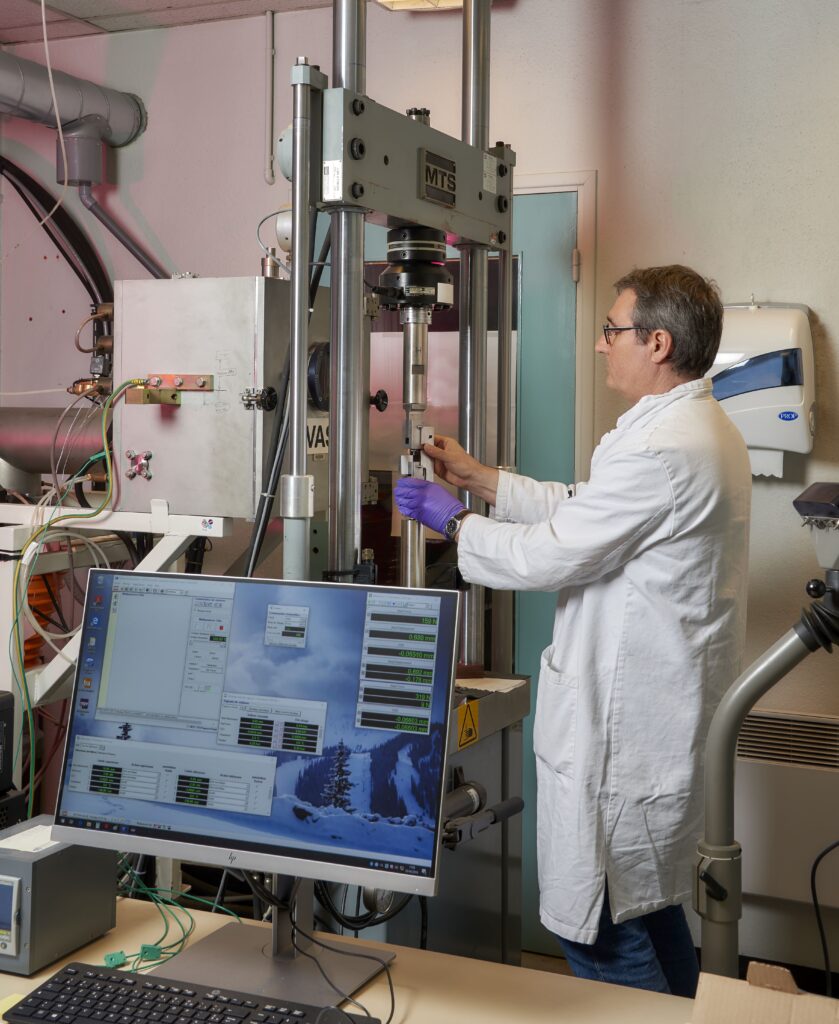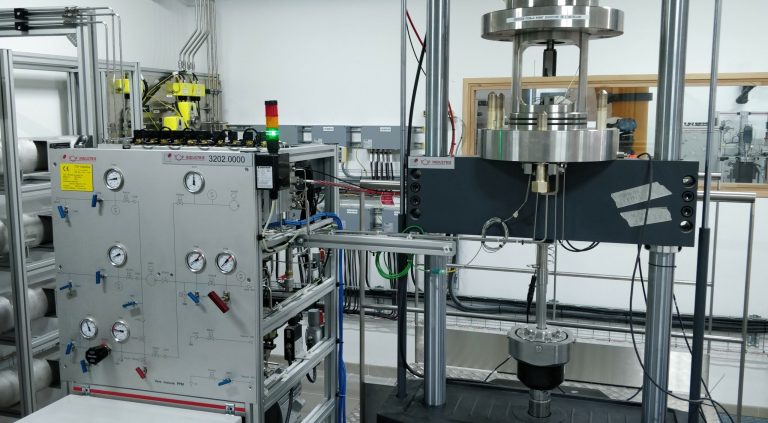The massive use of low-carbon hydrogen is one of the key factors to accelerate the energy transition. Its deployment faces technological challenges from its production to its final use, thus raising issues related to its transportation. As part of a partnership between CEA-Liten and RICE - GRTgaz's R&D division - researchers and manufacturers are working to prepare gas networks for the arrival of hydrogen.
Explanations with Tanguy Manchec, Hydrogen Manager at RICE and Laurent Briottet, Materials Sciences Expert at CEA-Liten.
The finding |The collaboration|The advances
Tanguy Manchec: The logistics pillar is absolutely essential to connect hydrogen producers and consumers in a safe, flexible and competitive way. Favouring the use of existing gas pipes to transport hydrogen is a more environmentally friendly and competitive solution. Since 2020, we have been injecting hydrogen mixed with gas into the GRTgaz network at our JUPITER1000 power-to-gas demonstrator in Fos-sur-Mer. We are currently working with German and Luxembourg partners on the MosaHYc project, which aims to convert a 100 km cross-border gas pipeline to hydrogen. It will be the first true international hydrogen ecosystem!
Laurent Briottet: The hydrogen sector is experiencing strong development both for its production and transport and for its storage. The introduction of the H₂ molecule into existing gas networks implies conducting research on the behavior of materials in this hydrogen environment. CEA-Liten, thanks to its expertise and dedicated technological platforms, supports industrialists to better understand the phenomena involved and thus prepare gas transport infrastructures for the arrival of hydrogen.
"GRTgaz has needs and relies on the CEA to meet these industrial and regulatory challenges.
|
T.M . Understanding the effects of hydrogen on metals is a very important issue. First of all, it allows us to demonstrate to the French authorities that we will operate these hydrogen networks with the same high level of safety as today's gas networks. Safety will always be our top priority. In addition, it allows us to refine our understanding of metallurgical mechanisms to better define our design guidelines, adapt our preventive maintenance program, or control the life cycle of our structures. To do this, we need first-rate expertise and highly sophisticated testing facilities, which is why we have called on the specialists at the CEA.
L.B. We have more than 15 years of expertise in the effect of hydrogen on materials. The studies carried out allow us to improve our understanding of microstructure-environment-mechanical interactions, to understand the mechanisms, to quantify them and even to model them. To achieve this, we have specific technologies such as mechanical test benches under pressure (up to 400 bar). This scientific approach is key to improving standards and rules for the use of gas transmission systems.
"It is the scientific approach that provides the keys that GRTgaz needs.

{%CAPTION%}
|
L.B. This partnership has led to the creation of a database on GRTgaz's infrastructure materials and to the implementation of a hydrogen test protocol representative of the operating modes of a gas network. This has also led to a better understanding of the effect of certain parameters such as the hydrogen content in natural gas. Research has shown that much of the existing network can be used if the necessary precautions are taken and the frequency of checks is adjusted.
T.M. Indeed, the first results are very encouraging. They confirm that GRTgaz's system is fully capable of receiving these hydrogen/natural gas mixtures. This allows us to refine their associated operating methods: pressure, frequency of maintenance and inspections, adaptation of monitoring procedures, etc.
We have really succeeded in translating the results obtained in the laboratory into an operational corpus applicable to a 32,000 km long gas transport network. It's a great success achieved in record time!
||||||||https://researchbyrice.com/wp-content/uploads/2021/10/Photo-1.jpg|https://researchbyrice.com/wp-content/uploads/2021/10/CEA020853-HD-1-1-scaled.jpg|Hydrogen platform at CEA-Liten. Mechanical testing machine under hydrogen pressure.|Studies of fatigue mechanisms under hydrogen at CEA-Liten. Equipment for cracking specimens before testing under hydrogen.|


